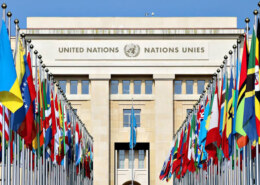The 21st century has ushered in a new era of global conflict, marked by civil wars, cyber warfare, terrorism, and geopolitical rivalries that transcend national borders. In this evolving landscape, the United Nations (UN) continues to play a pivotal role in promoting peace, security, and humanitarian assistance. Yet, the nature of contemporary conflicts presents both opportunities and challenges for the UN, testing the effectiveness of its mission and the relevance of its structure.
1. Evolving Nature of Conflict
Unlike the large-scale wars of the 20th century, modern conflicts are increasingly asymmetric, involving non-state actors, proxy warfare, and internal strife rather than direct confrontation between nation-states. Civil wars in Syria and Yemen, insurgencies in the Sahel, and the global fight against terrorism are prime examples.
Moreover, cyberattacks, disinformation campaigns, and climate-related resource conflicts have become prominent threats, often falling outside the traditional scope of military intervention or diplomacy. These complex, multi-dimensional challenges require equally adaptive responses—something the UN is still struggling to fully achieve.
2. The UN’s Peacekeeping and Mediation Efforts
One of the UN’s most visible roles is through its peacekeeping missions. Deployed in conflict zones like Mali, South Sudan, and the Democratic Republic of Congo, these missions aim to stabilize regions, protect civilians, and support the implementation of peace agreements.
However, peacekeeping in the 21st century is no longer just about separating warring armies. Today, it often involves:
-
Protecting human rights
-
Supporting democratic institutions
-
Enabling post-conflict reconstruction
-
Engaging in complex political mediation
The success of these missions has been mixed. While some operations have helped maintain fragile peace (e.g., in Liberia and Sierra Leone), others have faced criticism for inefficiency, abuse scandals, and limited mandates that render them ineffective in rapidly changing conflict zones.
3. Diplomacy and Conflict Prevention
Preventing conflict is a cornerstone of the UN Charter, and the organization has increasingly focused on early warning systems, preventive diplomacy, and mediation. The UN Secretary-General plays a key role in quiet diplomacy, while Special Envoys and political missions engage in negotiations across volatile regions.
However, success in conflict prevention often hinges on cooperation among major powers—a factor that has grown more complex with deepening geopolitical divisions among UN Security Council members.
4. The Security Council: Power, Politics, and Paralysis
The UN Security Council (UNSC) remains the body responsible for maintaining international peace and security, but its effectiveness is often hampered by veto powers and geopolitical rivalry, particularly among permanent members: the United States, China, Russia, France, and the United Kingdom.
For instance, the Security Council has struggled to take decisive action on the conflicts in Syria and Ukraine due to vetoes by Russia and China. This has raised concerns about the legitimacy and functionality of the UNSC in addressing 21st-century conflicts.
Calls for Security Council reform—including the expansion of permanent membership to better reflect today’s geopolitical realities—have grown louder, but consensus remains elusive.
5. Humanitarian Aid and Crisis Response
In war-torn regions, the UN remains a critical lifeline for millions of civilians. Through agencies like:
-
UNHCR (United Nations High Commissioner for Refugees)
-
WFP (World Food Programme)
-
UNICEF
-
OCHA (Office for the Coordination of Humanitarian Affairs)
…the UN provides food, shelter, medical care, and support to displaced and vulnerable populations.
However, access to conflict zones is often restricted by governments or militias, and funding shortfalls regularly hinder operations. In an increasingly fragmented international environment, maintaining neutrality and independence in delivering aid is a growing challenge.
6. The UN and Emerging Threats
New forms of conflict demand new tools. The UN is beginning to address emerging threats such as:
-
Cybersecurity: Promoting norms for responsible state behavior online
-
Climate-related conflicts: Linking environmental degradation to instability
-
Pandemics: Recognizing public health emergencies as security risks
Still, the organization is often reactive rather than proactive, and its bureaucratic structure can slow down response times in crises where speed is crucial.
7. A Platform for Multilateralism
Despite its flaws, the UN remains a unique platform for global dialogue. It provides a forum where all 193 member states—regardless of size or power—can voice their concerns, form alliances, and shape norms. In an era of rising nationalism and unilateralism, the UN’s commitment to multilateralism and international cooperation is more important than ever.
Conclusion
The United Nations is at a crossroads. While its foundational mission to maintain peace and security remains as urgent as ever, the tools and structures it employs must evolve to meet the complex realities of 21st-century conflict. From peacekeeping and diplomacy to humanitarian response and norm-setting, the UN’s role is indispensable—but far from perfect.
To remain relevant, the UN must adapt: embracing innovation, reforming outdated institutions, and strengthening its capacity to act decisively in the face of new global threats. In a fractured world, its success or failure could well define the future of international peace and security.

